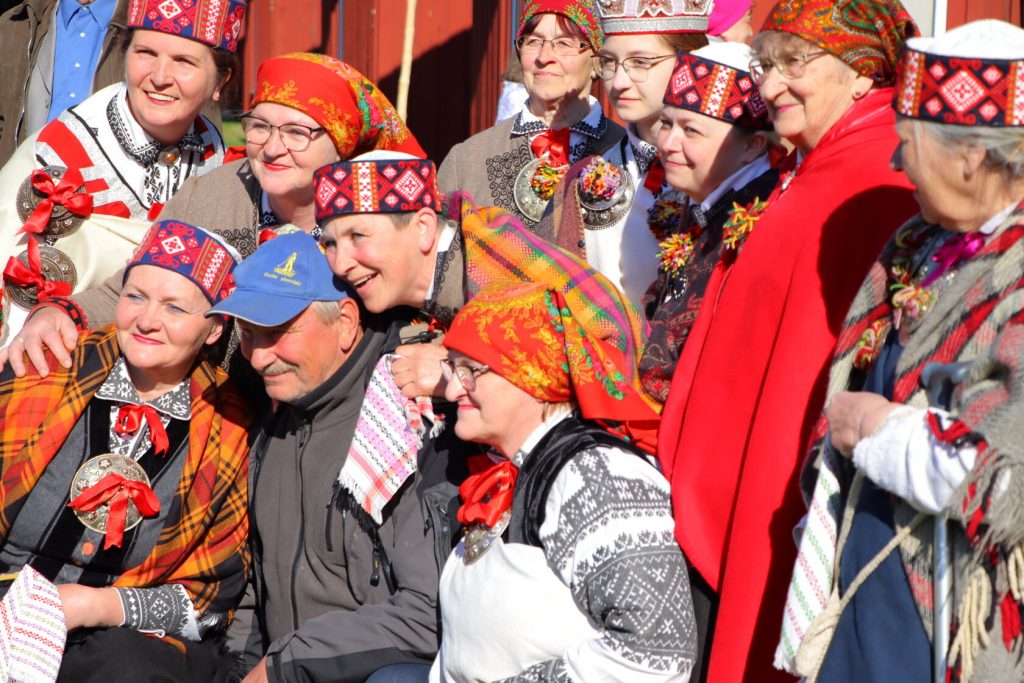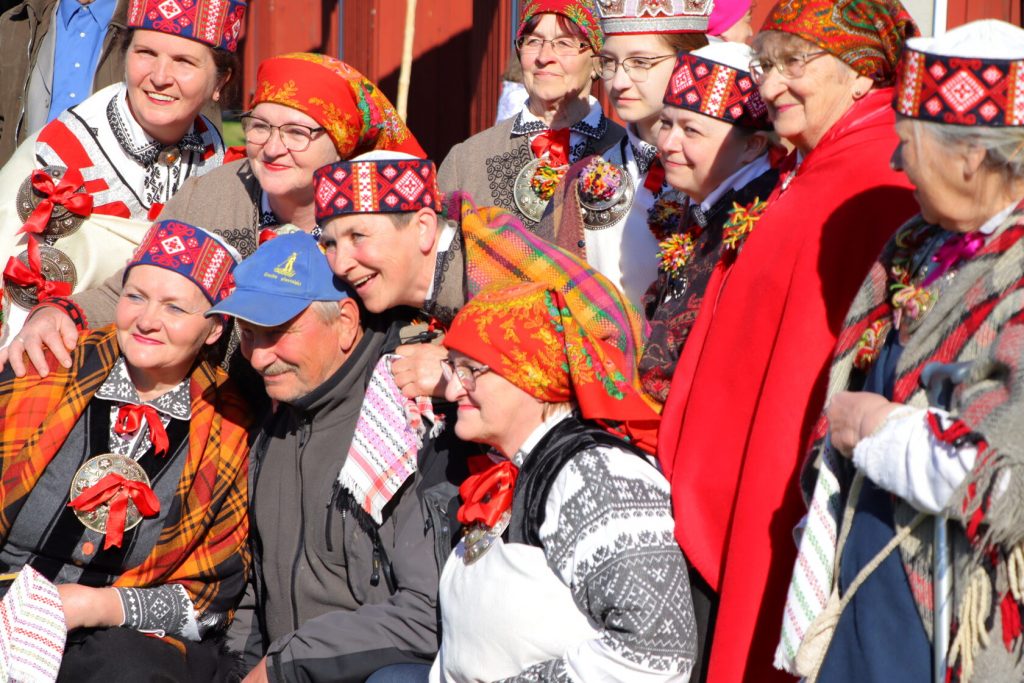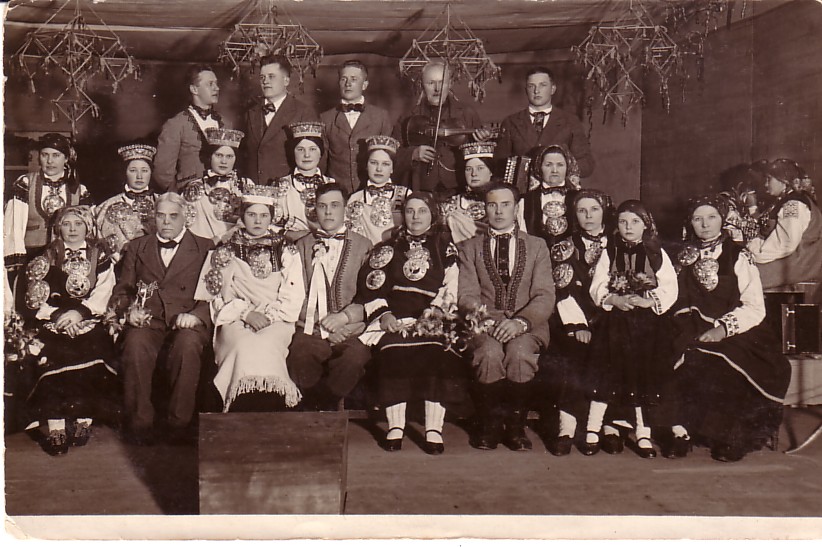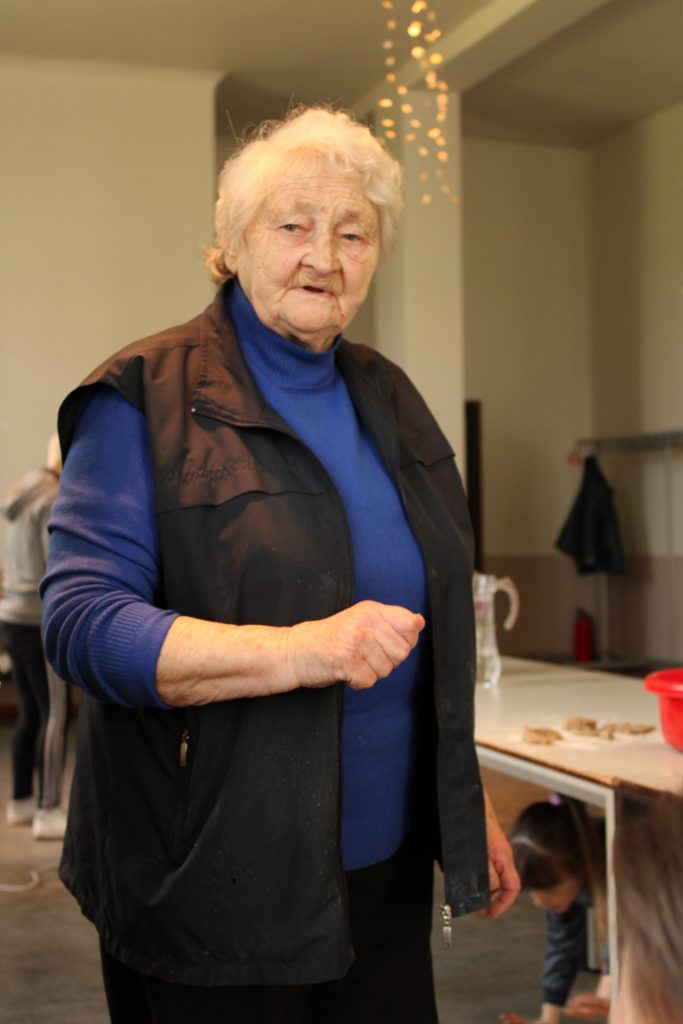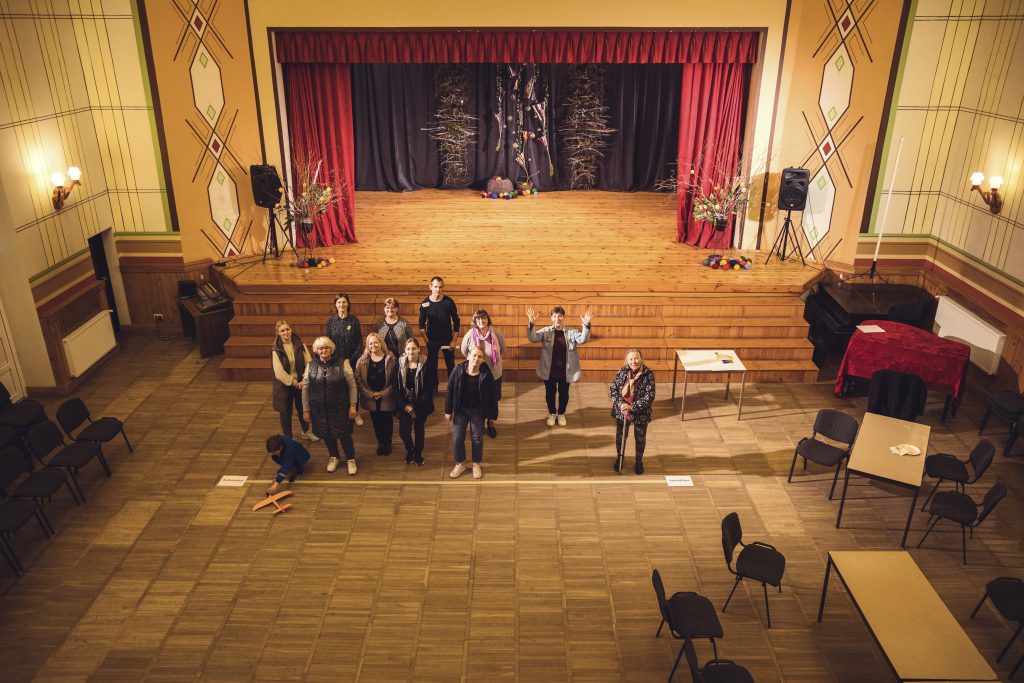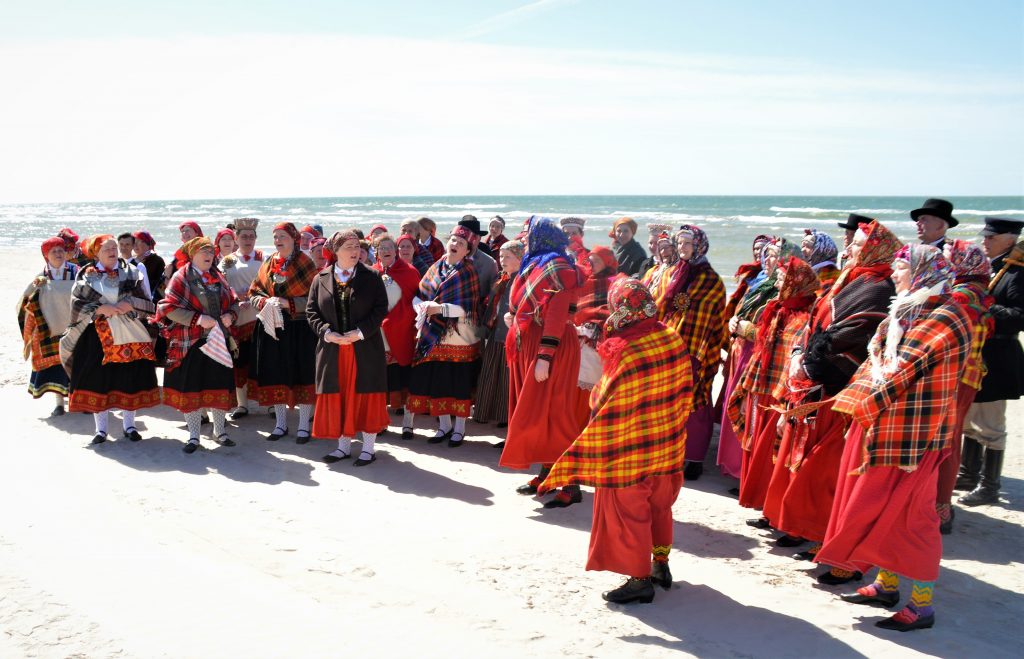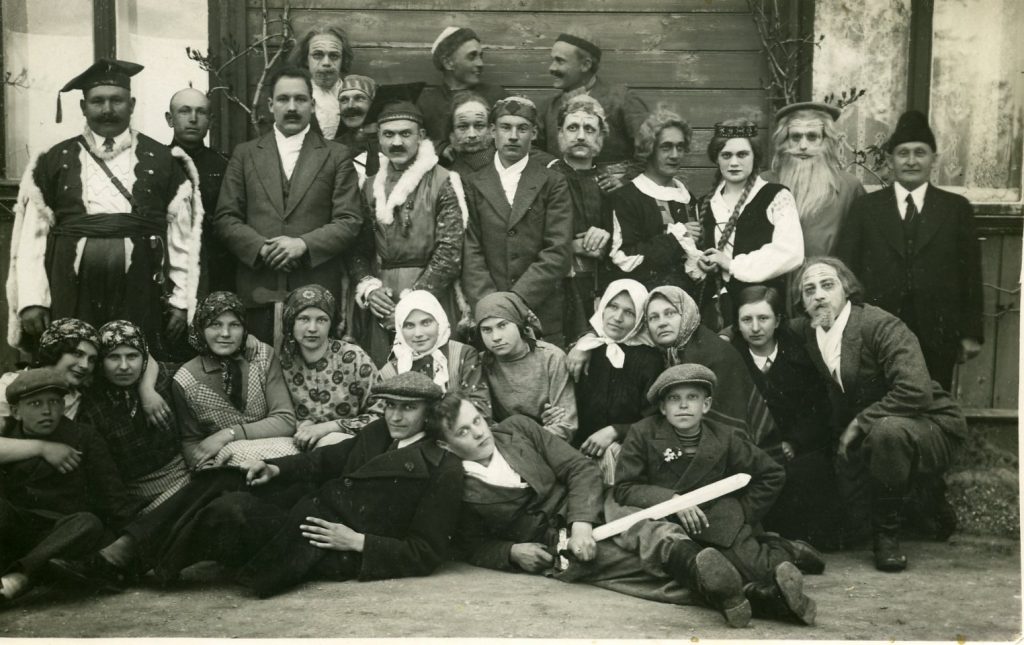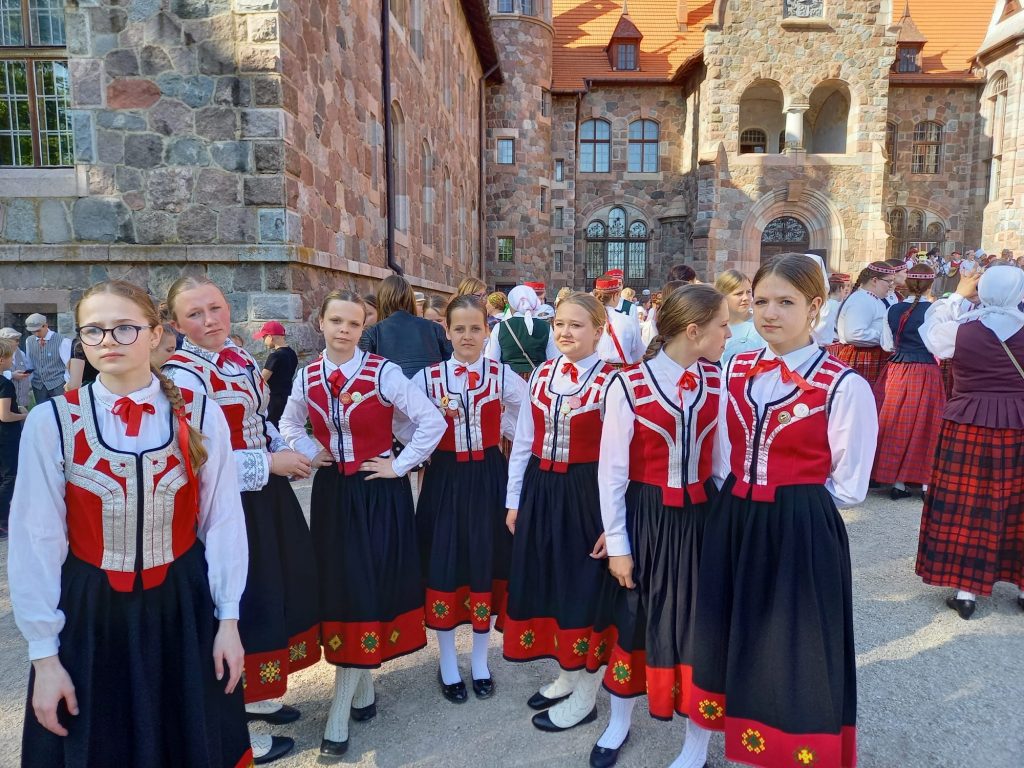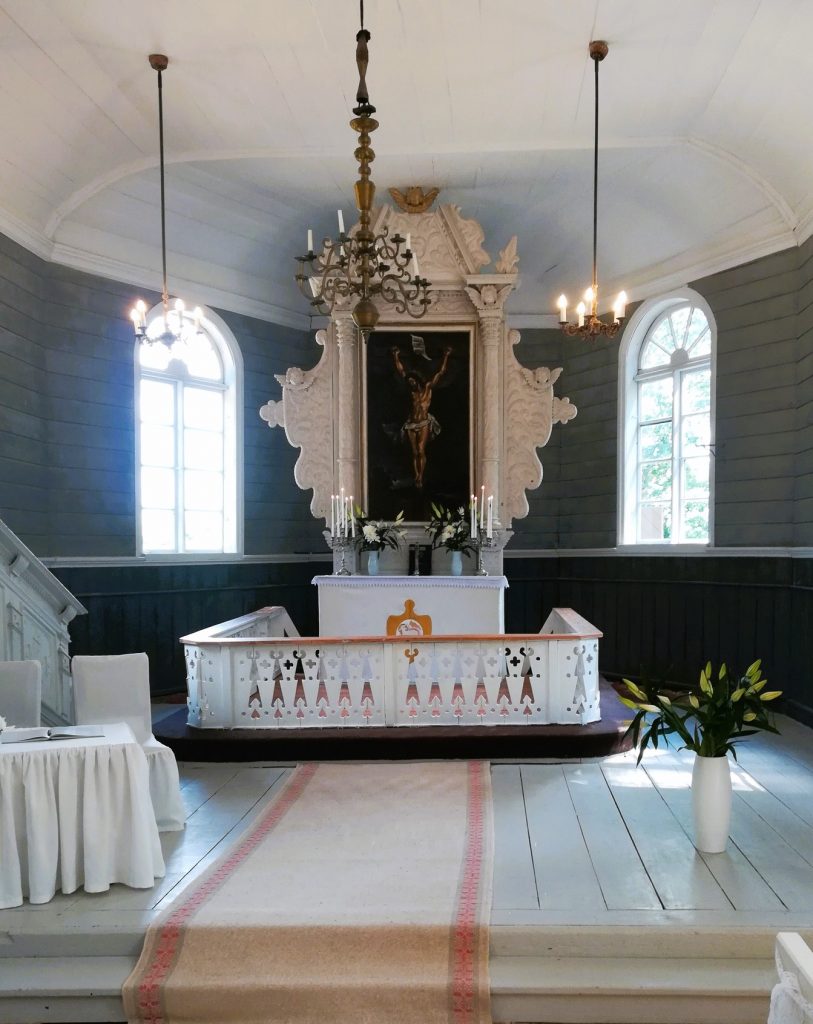Author:
Ieva Tālberga
Other domains
Oral traditions and their expressions, including language as a vehicle of intangible cultural heritage
Social practices, rituals and festive events
Music/performing arts
Traditional kitchen
Traditional craft skills
Knowledge and practices concerning nature and the universe
Title
Bārta cultural space (2023)
Geography
Bārta parish and parts of Dunikas parish, South Kurzeme Municipality
Bārta Cultural Space is formed by a community of residents who are committed to preserving their material and intangible cultural heritage, passing it on to future generations, and have proven their sustainability despite various challenges. "Bārta village – a small village, but stands proudly," is still sung in Bārta. The population of Bārta parish is small – around 500 inhabitants, and the community is united like a large family. The core of the community is made up of families that have lived here for generations – Meļķi, Ķudi, Ķīburi, Dobeļi, Plāciņi, and others, from whose surnames the village names have originated (Ķīburciems, Dobeļciems, Plāciņciems). Many are colleagues and relatives. Naturally, this sometimes leads to fruitful disagreements. However, to this day, when creating the local cultural life, everyone has worked closely together. The people are generally reserved, quiet, composed, and proud, yet when necessary, they can confidently and openly express their opinions. For newcomers, it can be difficult to integrate into the local community at first, but if one desires to get involved, over time, they are accepted into the fold. Indirectly, Bārta Cultural Space also includes those who no longer live in Bārta but regularly visit their parents and grandparents, attend events at the cultural centre and museum, and even organise their own events, such as the "Bārta Burger Ball." For the people of Bārta, it is important to preserve their culture and local traditions.
Key heritage keepers in Bārta include:
The Bārta Museum, Bārta Ethnographic Ensemble, the Folk Applied Art Studio "Kamolītis", the Children's Folklore Group "Bārtenieki".
Importance in Community Life
It is hard to imagine Bārta without one of the most beautiful Latvian folk costumes, without the melodious Bārta folk songs, and without the people's connection to Nature. For centuries, the people of Bārta have taken pride in their unique cultural heritage: their distinctive polyphonic singing – long calls and "leiti", traditional games, dances, their dialect, vibrant handicrafts, culinary traditions, and other values. Bārta’s cultural and historical heritage strengthens the identity of the people of Bārta and unites the community. It has always been perceived as an integral part of life and plays a significant role in shaping the community’s sense of self-awareness and belonging. In all of Bārta’s festivals and celebrations, some aspect of traditional culture is included; for example, during the parish celebrations, young Bārta residents are welcomed with the ritual of "pādes dīdīšanas" (heel-tapping). The younger generation of Bārta also lives with the desire to pass on knowledge and skills about their intangible cultural heritage to their children, making it even more important to keep the traditions alive. The people living in Bārta have created a self-sufficient community, where they support each other, share knowledge, actively follow local events, and stand by each other in both joys and sorrows. Each person takes care of their own household – some raise chickens, some make cheese, some sing, while others study the history of Bārta. Everyone has their own place and their own contribution, ensuring that the community functions as one whole, and that the living heritage is preserved and maintained from generation to generation.
Activities
The Bārta community highly values and actively participates in various events to preserve the values of the Bārta cultural space.
The Bārta singing tradition, games, and dances. The rich and distinctive collection of traditional music has been recorded and kept alive. Special attention is given to the traditional vocal polyphony of South-Western Kurzeme, ancient and archaic songs – long calls and "leiši", which are still passed down from generation to generation both in families and within the ethnographic ensemble. (Attached is a detailed description of this singing style by ethnomusicologist Ieva Pāne).
The Bārta dialect. The uniquely crafted words and phrases have been preserved in folk songs, legends, and stories, and are still occasionally heard. (Attached is a description of the Bārta dialect by linguists Ieva Ozola and Liene Markus-Narvila, with some examples available for listening).
Customs, rituals, and festivities. In Bārta, Latvian seasonal festivities are celebrated with all their associated rituals – Lielā diena (Easter) with sunrise greetings and washing faces in the river, Midsummer with cheese, beer, and flower-crown-making, and Winter Solstice with the pulling of the log. In September, around harvest time, the parish festival takes place, where traditional culture is prominently represented. The event includes a procession, concerts, a ball, a market, the welcoming of young Bārta residents, fishing competitions, and a concert in the church – year after year, this is the largest and most vibrant gathering of the residents of Bārta Parish.
The tradition of wearing the Bārta national costume. The colourful Bārta national costume has become iconic and is one of the most striking symbols of Latvian folk dress. It is proudly crafted and worn not only in Bārta but also in other parts of Latvia (many Latvian dance groups and choirs wear Bārta costumes), as well as in the diaspora. Many Latvians living abroad also wear Bārta national costumes because they are not only beautiful and vibrant but also easier to make outside Latvia, where appropriate materials are not as widely available. After the war, Bārta and Nīca costumes were the most popular choice in refugee camps. When making folk costumes, materials such as curtains and blankets distributed by humanitarian aid could be used, with only the need for re-dyeing. More information can be found in the museum and research centre “Latvians in the World” exhibition “Dress Up Latvia” (available at: https://uzvilktlatviju.lapamuzejs.lv/). The most distinctive features of the Bārta national costume are: the festive skirt – the burdainie lindruki or burdaiņi (black with a wide red hem), the maiden’s ņieburs or burste (vest) made of red wool jacquard fabric with shimmering brocade ribbon stitching, three types of villāņi (shawls) – white (only for maidens), blue, and “drābulis” – made from linen-patterned fabric, worn under the blue one. Maidens wear elaborate acorn crowns on their heads, while married women wear patterned scarves. The attached photos show the costume in all its variety.
The main exhibition at the Bārta Museum is "The Tradition of Crafting and Wearing the Bārta National Costume in the 19th–21st Century". The Bārta Ethnographic Ensemble and the children's folklore group “Bārtenieki” maintain the tradition of wearing the national costume by researching, restoring, and proudly wearing it during celebrations. (Attached is a story about a national costume written by local historian Evita Ķuda.)
Bārta Amateur Theatre. For almost 100 years, local people in Bārta have been performing various plays and musical productions. This enthusiasm for theatre has not faded, and each year at least one new play is staged, traditionally presented during the Midsummer celebrations. These performances often include traditional Bārta songs, games, tales, and other folklore materials.
Culinary heritage. Bread baking, cheese making, butter churning, beer brewing – these are just a part of the culinary tradition. In Bārta, there are several women who bake bread and make various dairy products such as curd, cheese, and butter. Meanwhile, young people enthusiastically try to revive the beer brewing tradition. Everyday dishes include sour porridge, kuģelis (potato bake), žūra (oatmeal pudding), and bukstiņbiezputra (barley and potato porridge) with ukse (a thick sauce). (Attached are the recipes for cookies, known locally as "spiras", as well as the preparation methods for kuģelis and white butter.)
Hunting, fishing, berry picking, and mushroom foraging – ancient traditions in Bārta. For generations, the people of Bārta have known the best mushroom spots, which they try never to reveal to others. Mushrooms are foraged in the Bēdiņu Grove, near the Ūnu, Lapsu, and Pižu hills, and by the Old Sawmill. A matter of pride in Bārta is the preparation of a "bunduls" with salted mushrooms for the winter. (Description is attached.) Knowledge of the best berry-picking locations has also been passed down through families. Cranberries, lingonberries, and bilberries are picked in the Brienamais Bog and Paltu Bog. It is important not only to know how to access the berries in the bogs but also how to store them for the winter. Maintaining and preserving hunting traditions today is important because the younger generation needs to be taught how to live in harmony with nature, how not to consume more than necessary, how to follow hunting laws, what rituals to follow when something is hunted, and how to prepare the game in a delicious and healthy way. These traditions are carefully nurtured and safeguarded by the Bārta hunting collective "Bārtenieki" across several generations. Similarly, with fishing traditions – grandfathers and fathers pass down their knowledge of this skill to their children and grandchildren.
Traditional craft skills. Weaving, knitting, embroidery, and woodworking skills are nurtured and passed down from generation to generation. The greatest role in this is played by the Folk Applied Arts Studio “Kamolītis” and its leader Indra Bunka. In Bārta, traditional glove patterns, blankets, woven towels, shirt embroidery, and more are carefully studied and replicated. At the same time, new and modern items are also being created – crocheted scarves, rag rugs, and more. (Indra Bunka talks about Bārta’s craft skills in the attached document.)
Local history and family research. One of the activities of the people of Bārta is to explore the history of their parish, remember the outstanding individuals of Bārta, and ensure that the large families do not forget their roots. The foundation of local history research lies in people's life stories, the stories of homes, events, and traditions. The main local historians of Bārta work at the Bārta Museum – its manager Aija Ķude, collection keeper Laura Rūsiņa, and local resident and family researcher Evita Ķuda. Genealogical research helps to learn more about traditions, crafts, material and spiritual values, and their inheritance not only within the family but also in the native parish.
Preserving and promoting Bārta’s cultural and historical sites. Bārta offers active recreation for the whole family – kayaking, hiking, orienteering, and more. There are many places in Bārta (see the attached list of the most interesting places in Bārta compiled by Katrīne Krūmiņa) that are linked to the history of Bārta and its beautiful surroundings, which over time have become popular sightseeing spots for both the local residents and visitors to Bārta. These sites are visited during hikes, excursions, and cleaning events, among others.
Christian traditions. Both Lutheran and Catholic congregations, as well as home churches, are part of Bārta, preserving and maintaining the sacred materials and intangible cultural heritage. The Krūtes Lutheran Church is a nationally significant architectural monument with a 400-year history. In contrast, the Bārta Roman Catholic parish was founded only in November 1998, and the church was built in 2002.
Inheritance and transmission
The transmission and inheritance primarily occur within families, which is especially evident in Bārta. The younger generation feels a responsibility to preserve their heritage for future generations, feeling a sense of belonging to a special place on the map of Latvia.
Amateur art groups make an invaluable contribution to passing on the heritage to the next generations:
– The Bārta Ethnographic Ensemble ensures the inheritance of Bārta's rich folk song treasury, with the repertoire being formed by listening to and imitating long-standing singers. Lead singer Līvija Otaņķe has been part of the ensemble since 1958. Her godfather, Jēkabs Ķīburs, was the founder of the ensemble, leaving behind notes with folk song lyrics and performance scripts as a legacy.
– The children's folklore group “Bārtenieki” and its leader Mudīte Meļķe provide the opportunity for Bārta's youngest generation to learn local folk songs, games, and dances.
– The Folk Art and Craft Studio “Kamolītis” organises various craft skill training sessions and regularly offers masterclasses.
A crucial role in the inheritance of Bārta's cultural heritage is played by the Bārta Museum, which collects, compiles, and digitises valuable items, as well as organises various events and exhibitions.
Bārta's tourism entrepreneurs often include performances by the Bārta Ethnographic Ensemble in their event programmes, helping to popularise Bārta's traditional culture to a wider audience. This more relaxed setting allows people to see that living heritage has value both during celebrations and in everyday life.
The people of Bārta have established close cooperation with the Kurzeme Humanities Institute, jointly publishing various studies and compilations in several books (see the publications section below).
History
Bārta’s cultural landscape is closely linked to the region’s ancient history. The place name derives from the Bārta River, on whose banks the Baltic tribes once lived. According to archaeological findings, the area has been inhabited since the early Iron Age. However, the first documented mention of Bārta dates back to a 1253 agreement between the Bishop of Courland and the Livonian Order concerning the division of the Curonian Piemare lands, thus making Bārta part of the Grobiņa Commandery until 1561. For a time, due to the debt of the Order’s Master, Gothard Ketler, it came under Prussian ownership, but after his younger son Wilhelm’s advantageous marriage to Sophie, the daughter of the Duke of Prussia, Grobiņa was regained as part of the dowry. (It is likely that this period, during which the Lower Courland areas (Bārta, Nīca, Rucava) were part of Prussia, greatly influenced the traditional costumes of these regions, which are notably different from those of the rest of Latvia). After the dissolution of Livonia, a period of prosperity began, and the Bārta, Nīca, and Rucava manors became part of the Duchy of Courland and Semigallia. During this time, peasants, after paying taxes, accumulated wealth that could not be used to purchase land, so they could demonstrate their prosperity through elaborate folk costumes. Stacked silver brooches, tall acorn crowns, and bronze-plated shoes and boots all reflect a flourishing period during Duke Jacob’s reign. In 1795, Bārta was incorporated into the Russian Empire. During this time, Bārta became an important postal station on the route from Jelgava to Königsberg, giving the people of Bārta the opportunity to experience the latest cultural influences from around the world. This may explain why the people of Bārta developed a strong sense of self-confidence, which can still be felt in their songs, costumes, and character. Having experienced numerous events, including Napoleon's campaign against Russia, in 1817 the people of Bārta welcomed the emancipation of the peasants – the lands of the Bārta manor were divided into old and new farms. In 1918, Latvia was founded as an independent state. The people of Bārta actively participated in its growth – in 1925, a new school building was opened, built on the foundations of the old manor house, symbolising the regained freedom and self-determination. Cultural life soon began in earnest – with a theatre, choir, and even their own small Song Festival with around 400 singers from all over Kurzeme. Bārta became a hub for farmers and craftsmen, with the local district administrator, Jānis Birznieks, becoming the Minister of Agriculture, and Bārta was visited by the President of the time, Kārlis Ulmanis. A cultural centre was also built with funds donated by the residents and the state.
The Second World War and the change of power (when Latvia was annexed by the Soviet Union) had a painful impact on Bārta. A large number of Bārta residents were deported to Siberia, and, out of fear, but reluctantly, the people of Bārta joined the collective farms or kolhoz – "Varavīksne", "Vētra", and "Brīvais solis", which merged into one large collective farm, "Bārta", in the early 1960s. However, cultural life did not fade – the Bārta Ethnographic Ensemble continued to operate, consisting not only of singers but also two dance groups. A folk arts studio was established, and Bārta had its own brass band. The Soviet Union maintained its hold until the late 1980s, but then a national awakening began across Latvia, and in 1991, Latvia regained its independence. In 2009, the territory of Bārta was included in the Grobiņa municipality. As a result of the administrative territorial reform in 2021, the Bārta parish became part of the South Kurzeme municipality, which is currently the largest municipality in Latvia, with 26 parishes and 5 cities.
Today, Bārta's cultural heritage plays a more representative role compared to earlier times, when it was an integral part of daily life. Bārta's living heritage not only shapes the community's identity but is also a crucial element in maintaining the spiritual and psychological well-being of the people of Bārta. The people of Bārta need to value themselves and build their history with confidence in the future. Of course, the Soviet era and collective farm life have left their mark, but there are also young and enterprising individuals here who see the potential for Bārta's development (resources) to use to their advantage, promoting Bārta both as an important cultural and historical site in South Kurzeme and as a good place to live. They see the possibility of transforming and adapting it to modern times while respecting the traditional cultural heritage.
Additional Information
In the spring of 2023, after a 70-year hiatus, the tradition of raft building and floating in Bārta was revived, thanks to the efforts of Bārta’s men – Māris Ķūdis and Einārs Ķūdis – as well as history enthusiast Guntis Rolis from Dunika. This tradition had long been a characteristic, seasonal activity for the locals, as Bārta was a waterway used for floating timber to Lake Liepāja. The revival of this tradition has contributed to the learning of raft-building skills and the collection of folklore materials related to this practice. As part of the celebrations, a small exhibition was created about raft building and floating, and the associated traditions. As an integral part of any Bārta celebration, the Bārta Ethnographic Ensemble once again participated, tirelessly singing about the main raft builders. At the end, it was agreed that this event should become an annual tradition in Bārta.
Another interesting event is the "Bārta Burger Ball," which has been held for nine years. It is organised by young people and their families, who feel a sense of belonging to Bārta's cultural space, even if life’s paths have taken them beyond Bārta. Here, the feeling of being among "one's own" prevails, thanks to the place from which you come
Masters
– Līvija Otaņķe – long-time singer and lead singer of the Bārta Ethnographic Ensemble;
– Gunta Klievēna – Līvija Otaņķe’s daughter, who continues the family traditions by leading the Bārta Ethnographic Ensemble. She is a cultural event organiser, creating celebrations for seasonal customs, city festivals, and more;
– Mudīte Meļķe – for 30 years, she has passed on the traditional music repertoire learned in the ethnographic ensemble;
– Mirdza Bibikova – weaver, knitter, member of the Bārta Ethnographic Ensemble, amateur theatre participant, expert in traditional costume wearing;
– Aija Ķude – director of the Bārta Museum, cultural history researcher, exhibition organiser, embroiderer, knitter, teacher;
– Iveta Ķude – weaver, knitter, seamstress, expert in traditions;
– Anita Helviga – knitter, embroiderer of Bārta’s traditional patterns, researcher and expert in the Bārta dialect, director of the Kurzeme Humanitarian Institute;
– Anna Zaķe – knitter, bread baker, expert in Latvian living traditions, protector of culinary heritage;
– Maiga Kuduma – expert in culinary heritage, traditions, and Latvian life wisdom;
– Inta Vanaga – cheese maker, protector of traditional culinary heritage, leader of the Bārta Roman Catholic Parish;
– Ina Otaņķe – weaver, knitter, member of the Bārta Ethnographic Ensemble, cheese maker, expert in culinary heritage;
– Lidija Bikše – cheese maker, expert in culinary heritage;
– Evita Ķuda – local historian, family researcher;
– Laura Rūsiņa – local historian, museum collections keeper;
– Gunta Jansone – librarian, local historian;
– Anita Dobele – expert in wooden crafts;
– Anna Sermoliņa – singer and local expert;
– Ina Grosbaha – singer, embroiderer, amateur theatre participant;
– Andris Zūns – expert in hunting and fishing traditions, beekeeper, natural and cosmic knowledge expert, weather observer;
– Māris Ķudis – reviver of the Bārta raft-building tradition, hunter, fisherman, organiser of sporting life;
– Ēvalds Vanags – artist, educator, creator and organiser of the “Bārta Burger Ball” festival;
– Gunta Meļķe – head of the Bārta Seniors' group and organiser of activities.
Institutions and Organizations
– The "Bārtas raksti" Association;
– Bārta Culture Centre;
– Bārta Museum;
– Bārta and Kalēti Parish Union Administration;
– South Kurzeme Municipality Centre for Folk Traditions and Folklore;
– South Kurzeme Municipality Cultural Department;
– Tourism Centre of South Kurzeme Municipality;
– The "Tvēriens" Association, which unites Bārta’s youth;
– The "Ods" Recreation Centre and "Bārtas Krasts" glamping regularly collaborate with the Bārta Cultural Centre, incorporating elements of Bārta's traditional culture into their event programmes;
– The "Bārtnieki 1" Hunters' Association works to preserve hunting skills and traditions;
– The "Ziemeļi" farm has been engaged in woodworking for several generations, processing wood not only into timber but also adding value by creating intricate wood carvings;
– Evangelical Lutheran Church of Krūte;
– Bārta Resurrection of Christ Roman Catholic Church;
– The Bārta Seniors’ Group maintains the well-being of the older generation and serves a socialisation function, which in turn encourages seniors to participate in various events related to the preservation and transmission of cultural heritage.
Strengthening the Tradition
So far, the continuity of tradition has been ensured through various events organised by the Bārta Museum, Bārta Cultural Centre, and amateur collectives.
The Bārta Ethnographic Ensemble and the children's folklore group "Bārtenieki":
– have regularly participated in and organised various events related to singing, dancing, and games – both locally and nationally in Latvia, as well as in Lithuania;
– have always ensured the correct wearing of traditional costumes, restoring costume details (with participants also contributing with their own handicrafts);
– have maintained and inherited in a living and continuous tradition for several generations their particular form of multi-voiced singing, which is not straightforward and demands good skills.
The TLMS "Kamolītis", in collaboration with the museum and cultural centre, have organised exhibitions, participated in national events in Latvia, and, most importantly, continue to pass on their knowledge to the younger generation.
Events held at the Bārta Museum:
2017.
– Exhibition "Jēkabs Rūsiņš – 100 years", and the book launch of Jēkabs Rūsiņš’s Poetry Collection.
– Joint exhibition with the Liepāja Museum "Celebrations of Bārta" – all about Bārta’s traditional costume.
– A five-year cycle began (2017–2021), with the exhibition “Honoured Bārta Residents – Anniversaries”.
2018.
– Exhibition “Bārta – 765”.
– Creative workshops – how to make Bārta’s traditional costume.
– Garamantas.lv website seminar in Bārta.
2019.
– Study and creation of family trees – seminar, lecture.
– Meeting of children of those deported from Bārta, afternoon of memories.
– “Family trees” exhibition.
2020-2021 (COVID pandemic time).
– Exhibition “Ancient handicrafts in Interior design”
2022.
– “Meet your Master” workshop in the museum – crocheting of scarves.
– Seminar “Bārta Church”.
– “Christmas decorations” creative workshops.
– Folk Applied Arts Studio "Kamolītis" 40th anniversary exhibition at the museum
(An additional programme "Bārta Women Singing" is available on request, featuring the ethnographic ensemble.)
The youth festival "Bārta’s Burger Ball" has taken place nine times, where locals and those born and raised in Bārta, but now living elsewhere due to work or other reasons, come together.
The people of Bārta value their heritage, which is promoted through various events such as exhibitions, concerts, and celebrations, where new knowledge and skills are acquired. These activities also serve to strengthen community bonds and enhance the recognition of Bārta. Not only the festivals but also everyday gatherings (such as rehearsals of amateur collectives) reinforce the community and help overcome exhaustion during crisis situations. The museum’s collection is a place where the history of Bārta is preserved, and heritage is being digitised, making it widely accessible and available for any interested party.
So far, the following funding has been received:
– In 2020, through the LEADER and LAD project "Diversifying Musically Educational Services in Bārta Parish, Grobiņa Municipality", a grand piano was purchased. Amount: 4,050 EUR.
– In 2021, through the LEADER and Rural Support Service project "Acquisition of Traditional Costumes for the Bārta Ethnographic Ensemble", the following were purchased: skirts, aprons for women and maidens, acorn crowns for maidens, women's headdresses and scarves (prūsenes), Bārta traditional shirts, maidens' shawls, and brooches. Project amount: 12,000 EUR.
Municipal funding for the implementation of cultural activities in Bārta’s cultural space:
– EUR 3500 in 2018
– EUR 2800 in 2019
– EUR 2100 in 2020
– EUR 2250 in 2021
– EUR 2500 in 2022
State funding – annual targeted grants to the head of Bārta ethnographic ensemble - around €400 a year and for the head of FAAS "Kamolītis" – around €400 a year for participating as members of the National Song and Dance Festival.
Additionally, funding from the municipal budget has been allocated for the renewal of material and technical resources:
– Bārta woollen jackets and bodices – €4,000 in 2016
– Bārta traditional shoes with brass studs – €500 in 2018
– Bārta traditional shirts – €1,045 in 2020
The Bārta Museum is maintained by the municipality with an average costs of €23000 a year
It is planned that support from the state and local government will be maintained to the same extent.
Continuity/Development
Research.
– a study of the voiceover of lower Kurzeme. Eve Pan, a Member of Barta's ethnographic ensemble, has defended her master's work in ethnomusology on the subject and hopes to release the compilation in both scientific and everybody's understandable language.
– research on the Bārta national costume is being initiated, as this is one of Latvia’s most beautiful yet under-studied traditional attires. Collaborations with researcher Aija Jansone have been discussed, with initial efforts likely to focus on the embroidery of Bārta shirts and shawls (villaines)
– Planned Activities for FAAS "Kamolītis" over the next five years, involving research, documentation, and practical work:
1. Study of hem patterns on Bārta skirts and weaving of new skirts (2023–2025).
2. Research on Bārta glove patterns, knitting replicas, and digitizing technical drawings of glove patterns (2024–2028).
3. Study of dreļļu blankets with woven patterns and their reproduction (2024–2026).
4. Creation of an exhibition for FAAS "Kamolītis" 50th Anniversary (2027).
Documentation.
– Creating a website and activating social media platforms in collaboration with Liepāja Art, Music, and Design Secondary School and Bārta
– Publication of Jēkabs Ķīburs’ lifetime work, a compilation of Bārta folklore material titled "Tautas dziesmu pūrs" (The Treasury of Folk Songs). Responsible parties: Bārta Cultural Heritage Association and South Kurzeme Municipality Centre for Folk Traditions and Folklore.
– developing a concept for an album of recordings by the Bārta Ethnographic Ensemble in collaboration with ethnomusicologist Ieva Pāne and the South Kurzeme Municipality Centre for Folk Traditions and Folklore.
Over the next five years, the people of Bārta will continue to honour their culture, organise activities to promote the cultural heritage of the Bārta region, and preserve the legacy of their ancestors.
Each year, the following events are planned:
– Seasonal festivals, including Lielā diena (Easter), Jāņi (Midsummer), and the Winter Solstice.
– Singing festival titled "Celebration of Southern Kurzeme Polyphony."
– Parish festival featuring a craft market, initiation of young community members (with the traditional "pādes dīdīšana" ritual), fishing competitions, creative workshops, and other activities.
– “Meet your Craftsman” event;
– “Bārta rafters Festival”;
– Tourism Festival “Bārta Autumn 2023”;
– Museum Night;
– Poetry days;
– "Bārta Burger Ball" Festival;
– a calendar featuring Bārta’s national costume and traditional culinary heritage recipes will be published in collaboration with the Bārta Museum, the Bārta Cultural Heritage Association, artist Evalds Vanags, and the South Kurzeme Municipality Centre for Folk Traditions and Folklore.
– Developing a unique Bārta brand in partnership with local activist Ēvalds Vanags and the Liepāja Art, Music, and Design Secondary School
– A publication on the traditional vocal polyphony of Southern Kurzeme will also be produced, with responsibility resting on the Bārta Cultural Heritage Association, ethnomusicologist Ieva Pāne, and the SKM Centre for Folk Traditions and Folklore.
Every year, events will be held to commemorate anniversaries of events or notable figures associated with Bārta, because it is vital to know one’s history and the achievements of previous generations to successfully continue and develop the local cultural space:
– 2023 – 770 years since Bārta was first mentioned in written sources;
2024 – 95 year anniversary of the Bārta Ethnographic ensemble; 90 years anniversary the long-time head of Bārta ethnographic ensemble and folk artist Zigurds Rukuts;
– 2025 – 150 year anniversary of the distinguished Latvian historical figure Jānis Birznieks;100 year anniversary of the Bārta School;
– 2026 – 210 year anniversary of the educator, organist and Bārta cultural worker Juris Bergmanis;
– 2027 – 130 year anniversary of the folklorist and founder of the Bārta Ethnographic ensemble Jēkabs Ķīburs; 110 year anniversary of the poet and local historian Jēkabs Rūsiņš;
– 2028 – 150 year anniversary of the cultural worker and traditionalist Anna Kūma.
It has been decided to establish the association Bārtas Kultūras Mantojums (Bārta's Cultural Heritage), tasked with securing funding from the National Culture Capital Foundation and other sources for activities such as documentation, publishing books and brochures, heritage digitisation, research, and similar initiatives.
The objectives of these measures are:
1. Promoting the visibility and sustainable development of the Bārta cultural space;
2. Strengthening the Bārta community ties;
3. Conservation and inheritance of living cultural heritage.
Threats to the Tradition
Bārta's cultural space is affected by a variety of threats, both local and global.
Firstly, the closure of the primary school and kindergarten has significant implications. As a result, children now attend schools in neighbouring parishes, where the implementation of regional studies, as envisioned in the Development Plan for the Law on Historical Lands, may not be feasible. Moreover, the absence of a local kindergarten discourages young parents from settling in Bārta, as they opt to live and work in places where daily life can be arranged more conveniently.
Secondly, the population in Latvia, including Bārta, continues to decline, reducing the number of tradition bearers and inheritors. Currently, the area is home to approximately 530 residents, who strive to protect their unique cultural and historical heritage. Unfortunately, support from the municipality is also dwindling each year. A significant portion of the cultural budget is consumed by heating costs for community spaces, leaving fewer resources for organising events to sustain traditions. Residents have repeatedly requested that the former school building be entrusted to the community for use in developing associations, expanding museum exhibits, and providing spaces for active seniors, among other purposes.
Thirdly, the natural transmission of traditions is no longer occurring as it once did. Changes in lifestyle mean that multiple generations no longer live under one roof, necessitating greater investments to engage children and young people in preserving their ancestors' cultural and historical heritage.
Applicant
Cultural Administration of South Kurzeme Municipality, reg. No. 40900038114.
Photo Gallery
Audio Materials
Video Materials
Text Materials
Publications
Latvian Language Institute of the University of Latvia (2016) Avoti vēl neizsīkst (Latviešu valodas dialekti 21. gadsimtā). Liepaja: Liepaja University
Kurzeme Humanitarian Institute (2017) Avoti vēl neizsīkst (Latviešu valodas dialekti 21. gadsimtā)
Kurzeme Humanitarian Institute (2017) Bārtas dzīpari. Liepāja: Liepāja University
Piemares ļaudis un likteņi (2019) Ķuda, E.: "Meklējumi un atradumi dzimtas ciltskokā: Pūsēnu uzvārds un ar to saistītie likteņi". Liepaja: Liepaja University
Piemares ļaudis un likteņi (2017) Ķuda, E. un Krieviņa, K.: " Bārtas kultūrvēsturiskās Personības: spēkavīrs Jānis Zauls (1906-1989)" Liepāja: Liepāja University
Bārtas pastāsti (2005) Liepāja: Liepaja Academy of Education
Hānbergs, Ēriks (2012) Janeks uzmeklē Birznieku. Rīga: J.L.V. SIA, 2012.
Websites
Programme "Pa straumei." Bārta. Episode 10 - beautiful story of the Bārta River flow to the Sea.
Musical meeting BĀRTA : MALĒNIJA - an event organized by a rector at the Liepaja University where the Bārta Ethnographic Ensemble sang together with the Malēnija folklore ensemble "Ziemeri"
Bārta Kolhoz in 1984, harvest. - Bārta women singing in a crop field
90th anniversary of the Bārta ethnographic ensemble on Dec 9, 2019 - a glimpse at the 90-year anniversary event of the Bārta Ethnographic Ensemble
Bārta sings, dances and plays - The Bārta Ethnographic Ensemble, together with the children's and youth folklore group "Bārtenieki," works to preserve intangible cultural heritage.
Aizpute TV story about Bārta parish "Behind the hundredth kilometre' - a glimpse into daily Bārta life 5 years ago
A story about the FAAS "Kamolītis" - Story by weaver and knitter Mirdza Bibikova

